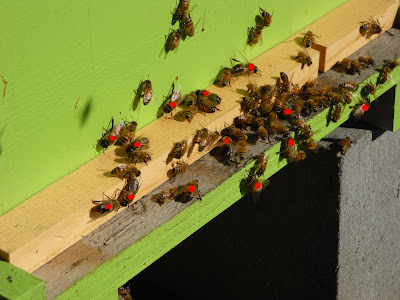Up until last week the winter we'd been having a fairly mild winter up here in Edmonton. Things took a change for the worse as we were hit with a foot of snow and some cooler temperatures. I was planning on checking in on the bees sometime this month but seeing as my car is having troubles getting around the city I hardly think country back roads would be kind to me.
To pass the time I have been reading forums and checking out Phil Chandler's webpage. Phil specializes in top bar hives. A few months back Patty approached me about setting up a top bar workshop for everyone in Edmonton she could find that would be interested in starting some top bar hives. Top bar hives haven't really been used in North America since most commercial operations use Langstroth hives. With the increase focus on natural beekeeping many new beekeepers are looking at top bars as a way of bucking the trend, regardless of benefits or draw backs. Currently Eliese with ABC in Calgary has been really promoting the top bar hive and the response has been great. With beekeeping being "legal" in Calgary many beginner course has been selling out as people are drawn to this new hobby. Hopefully Patty and I can start getting things rolling here in Edmonton.

In November I received "Natural Beekeeping" by Ross Conrad from my in-laws for my birthday. I had heard about Ross while browsing around forums, so I had put the book on my list. After finally getting through it, I had only been reading it during my Saturday work shift, I am extremely glad to have done so. Ross is very straight forward to his ideas on organic beekeeping, while not being too pretentious or sounding too granola. He presents both sides of the story with pros and cons of both. His personal experimentation and trials are very well explained and illustrated. I would highly recommend this book to anyone considering trying to go organic or even just more nature friendly.
Along with preparation for a top bar hive workshop this winter I also still have to get around to making my beeswax lip balm. I'm such a procrastinator.



















































